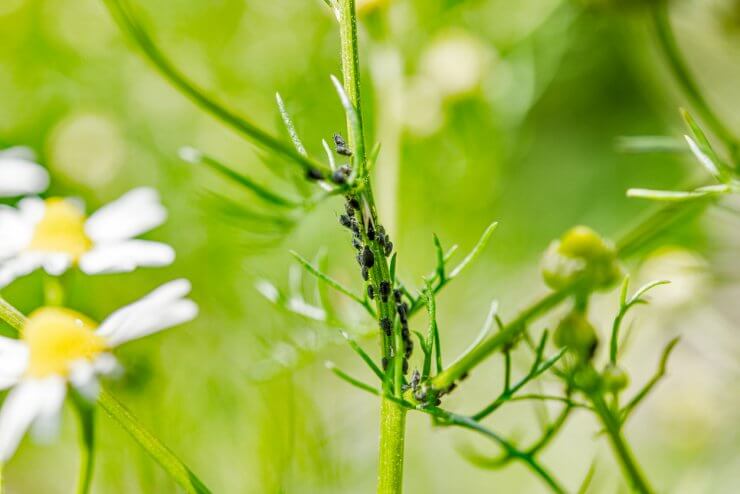
Ants and aphids on chamomile plant
Chamomile also tends to be relatively pest-free, except for aphids. Ladybugs love aphids. You can actually buy ladybugs online, but many gardening experts recommend against doing so; they are often caught in the wild and could introduce new parasites or diseases into your garden. Plus, unless your garden is in a greenhouse, the ladybugs will fly away within 48 hours. So why bother?
Instead of buying ladybugs, make your garden ladybug-friendly. And how do you do that? Plant ladybug-friendly plants. Try planting herbs like cilantro, chives, dill, and fennel. Garlic is another good choice. Ladybugs are drawn to the pollen of these plants; and there’s two things that ladybugs really like to eat: pollen and pests.
You can also spray the aphids off your chamomile plants. Use a hose on a gentle setting—just enough to knock the aphids off the plants. Or use a squirt bottle to encourage the aphids to go elsewhere. But don’t try to completely eradicate the aphids—remember, they’re food for ladybugs.
Some gardeners swear that marigolds are a natural pest deterrent; others say that’s just not so. So, you can plant marigolds among your chamomile plants for an extra splash of color, but don’t rely on them to be particularly protective.
You can also brew a batch of chamomile tea at triple strength, put it in a squirt bottle, and spray the insect pests off your plants. But be sure to wait until there are no bees around (protect the pollinators!), and don’t spray during the heat of the day.
Do pests attack your chamomile plants? How do you handle removing them—and even preventing them in the first place? Have you tried planting marigolds with your chamomile? Please tell us how you treat your chamomile plants to avoid pests.


 Previous
Previous

